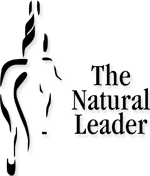Would you walk under a ladder? Open an umbrella inside….. or break a chain letter? These were but a few of the beliefs put to the test on a recent airing of the CBC show DNTO (Definitely Not the Opera). Through an account of humorous and superstitious beliefs that both limit and inspire us, the host explored “What we believe but cannot prove.”
What we believe is influenced by our family, our community and our experience. Beliefs can be factual, derived or acquired, they allow us to predict events and consider the consequences of our actions. Beliefs hold a powerful grip on our emotions and are the hallmark of being human.
Sam Harris, an author who examines the tenets of religion suggests “beliefs are both logically and semantically related. Each constrains, and is in turn constrained by, many others.” The statement holds true for a range of leadership issues we face on a daily basis.
Leadership requires that we sometimes question our own beliefs. Believing we have no control of an outcome can paralyze us. Great leaders frequently make reference to a peer, a boss, a friend, a mentor, who believed in what they could do when they were not sure of their own abilities.
The limiting factor may simply be knowledge, so fill in that gap. If the know how and skill is there, then it may be a previous experience in your way. You may be holding back based on a belief that this situation will turn out the same as the last. Alternately the barrier might be the knowledge that someone executing something similar failed. “Each constrains, and in turn is constrained by, many others.” Factual, acquired or derived.
Rhys, a five year old red dun quarter horse, represented my limiting belief. I did not know what had happened to cause a previous wreck, so I had derived a range of possible scenarios that got in my way. I had someone who believed I could do it so I had to confront my own beliefs with the facts that I had the skill, the knowledge and the experience to succeed. Letting go of my fear of failing was the only belief holding me back.
“Anytime we do anything that involves chance, and everything involves chance, there is always that moment afterwards when you wonder if you should have done it.” There is also nothing more exhilarating than taking that risk and realizing success. Go ahead walk under the ladder.
